8 Types of Deadbolts: Which Is Best for Your Door?
Pick the right lock to avoid your lock getting picked


No matter where you live, sleeping soundly at night is easier when you know your home is safe and secure with a deadbolt lock. Whether it’s time to replace an old door or just add another layer of security to an entrance, knowing your options will help you choose the best type of door lock for the job.
Let’s review the types of deadbolts available and how to choose the right one for you. We’ll also discuss who to call to replace a lock and whether you can DIY this project.
1. Single-Cylinder Deadbolt
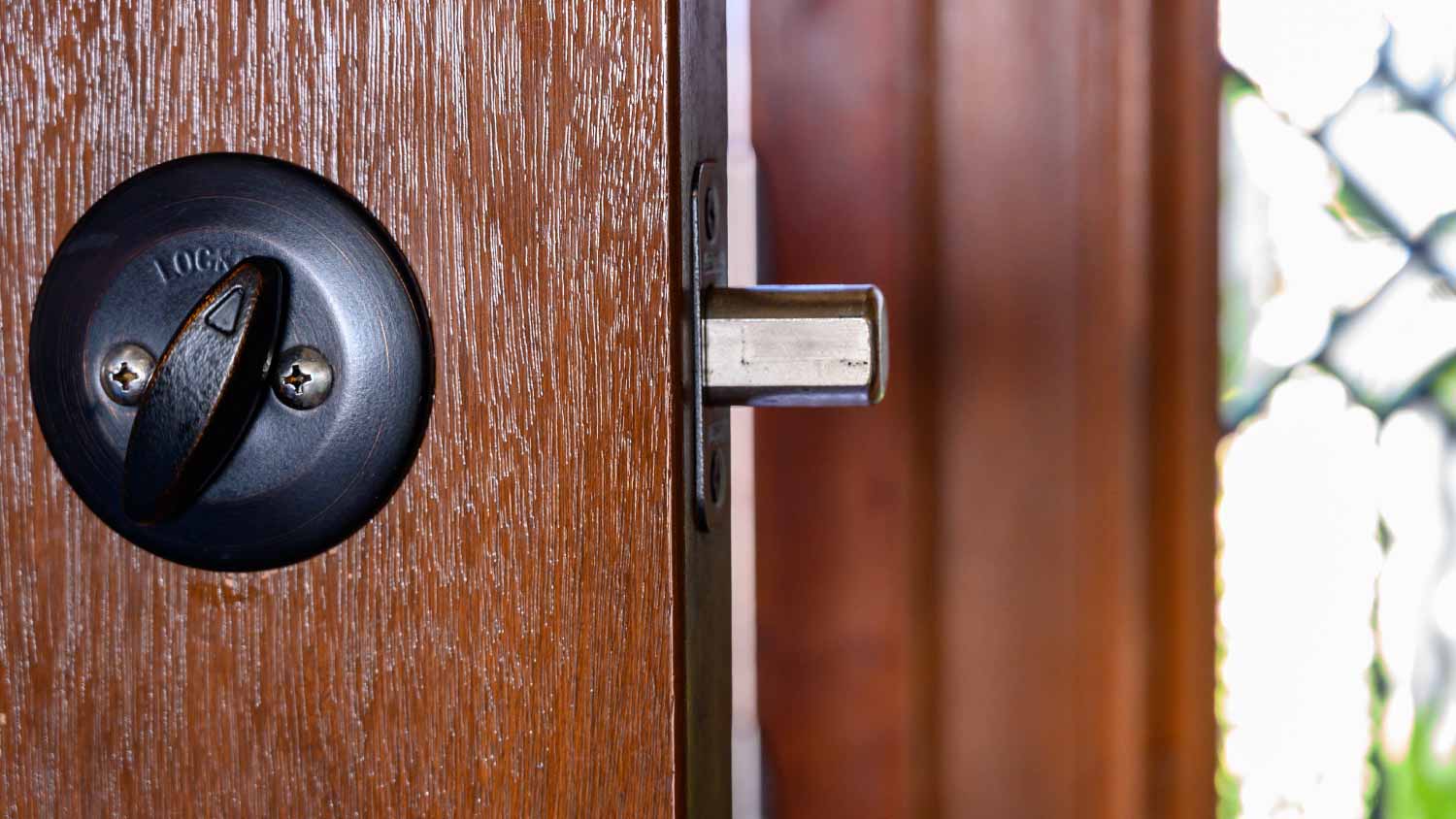
This is the most common type of deadbolt that most homes already have installed. And if you don’t have one installed yet and are worried about learning how to install a deadbolt lock, this is one of the simplest DIY options.
Inserting your key into an exterior keyhole will unlatch a single deadbolt with a quick turn of the hand. Single-cylinder deadbolts are at the lower end of front door security, so they’re often paired with a lockable doorknob or an indoor chain lock for an extra layer of protection. That said, they’re great for easy access to the outside with a quick, simple movement. These deadbolts should not be installed near glass or a window that intruders can break, reach through the broken glass to open the lock, and enter your home.
| Pros | Cons |
|---|---|
| Easy install | Low security |
| Cost-effective | Perhaps too simple |
| Simple to use |
Best for: Homes with no windows near the door
2. Double-Cylinder Deadbolt

These locks are less common than the standard deadbolt but offer more security because they have a cylinder on both the interior and exterior of the door. That means you’ll need keys to turn the lock regardless of which side of the door you’re on.
A double-cylinder deadbolt lock is great if you’re looking to make it more difficult to break in or have children or adults with dementia who are at risk of opening the front door unsupervised. But it poses the challenge of needing your key just to exit the house in a hurried emergency like a fire, which could be dangerous.
| Pros | Cons |
|---|---|
| Extra security | Complicated to use |
| Harder to exit accidentally | May prevent quick exit |
| Inconvenient |
Best for: Preventing at-risk individuals from exiting independently
3. Electronic Deadbolt

Always losing your keys? Sick of hiding a spare? An electronic deadbolt may be the perfect option for you. These deadbolt locks are internally similar to a single-cylinder deadbolt, but instead of requiring a key, they come with a touchscreen or punch pad with which you can program a unique code to unlock the door. These are sometimes called “non-connected locks” because they’re a closed system and don’t involve Wi-Fi or smart home technology.
These locks help you avoid common manual issues like the frustration of a key not turning in the lock, but you still may have to deal with technical issues like dead batteries. So, just because you can ditch some of the more cumbersome problems of a keyed lock, you’re not scot-free of potential issues.
| Pros | Cons |
|---|---|
| No key required | More expensive |
| Allows others access | Bulkier design |
| Doesn’t require Wi-Fi | No smart integrations |
Best for: Secondary entry doors for emergency access
4. Smart Deadbolt
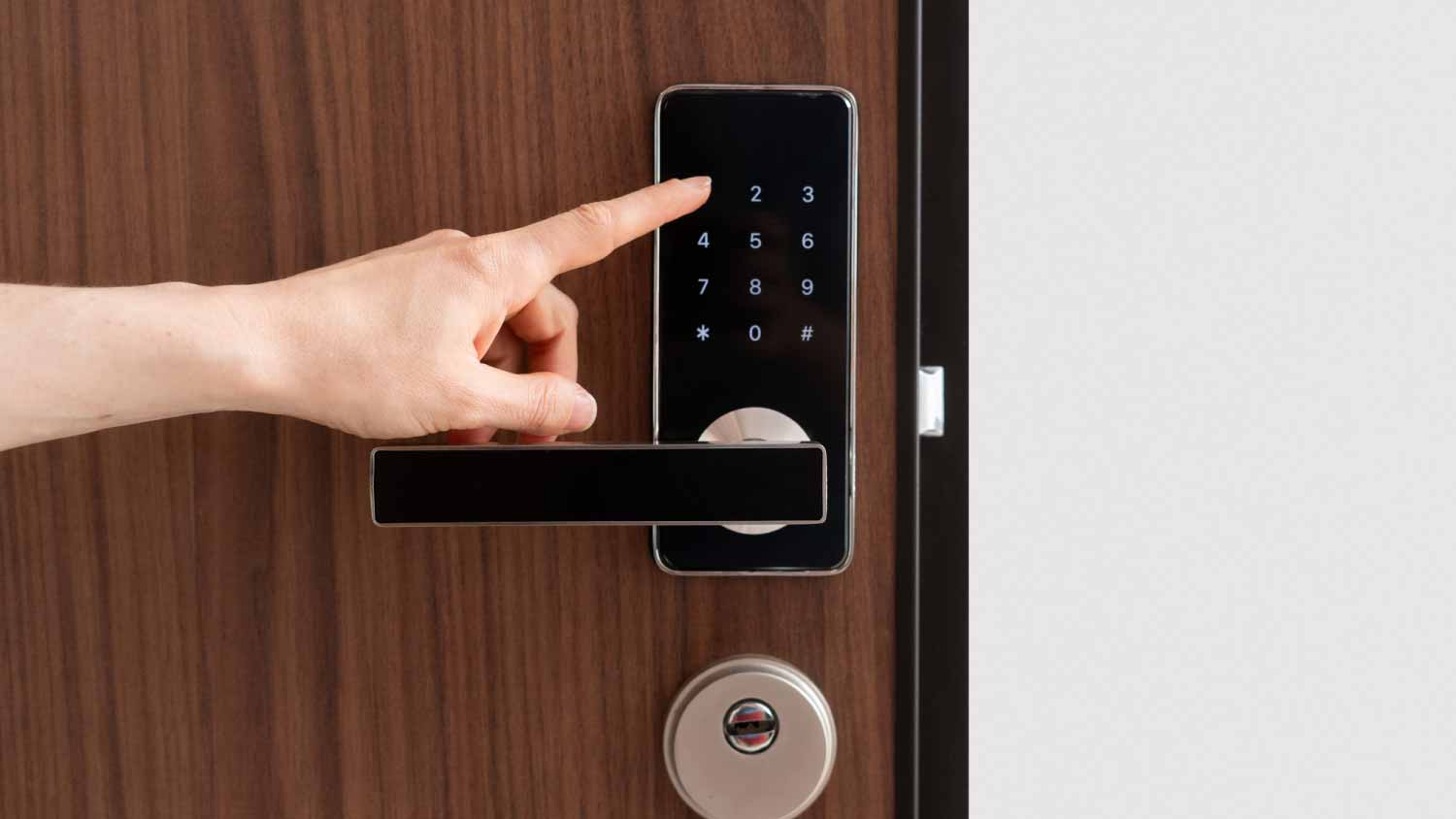
Smart deadbolt locks offer many new features you won’t find with traditional or electric locks. They conveniently connect to your smartphone, letting you unlock the door remotely, assign temporary codes for specific times and dates, and see the locking history. You can also receive notifications when your door has been locked or unlocked, tampered with, or is low on battery.
These locks have disadvantages, namely their reliance on both a stable network connection and battery power. It’s worth noting they can also be hacked. It helps to use strong passwords and put the lock on a separate network from your other devices.
| Pros | Cons |
|---|---|
| Mobile-app connectivity | Often more expensive |
| Includes battery back up | Can be hacked |
| Offers integrations |
Best for: Mobile lock control
Practice password safety with your Wi-Fi network. Changing your password regularly can help prevent hackers from accessing your security devices.
5. Mortise Deadbolt
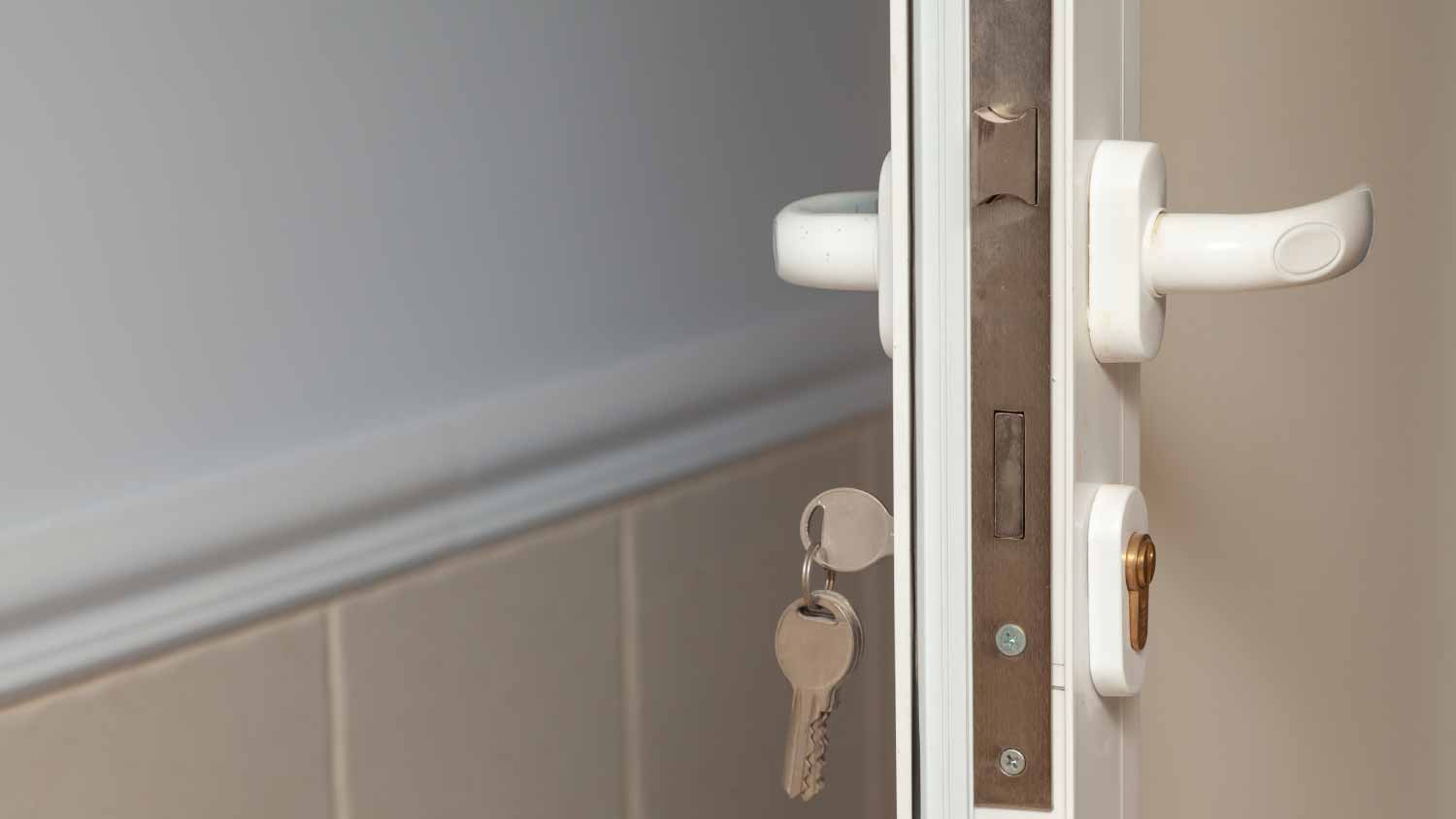
The mortise deadbolt lock has been around for a long time. Thanks to its bolt and latch system, it’s known for being safe against tampering. Only with a key inserted can you both lock and unlock the door, and the mechanism is completely hidden from the outside.
Mortise locks are often found in hotels, though they can also be installed in residential homes. Due to their solid security and complexity of construction, they tend to cost more.
| Pros | Cons |
|---|---|
| High level of security | More expensive |
| Enhanced durability | Inconvenient to use |
| Difficult installation |
Best for: Commercial or exterior residential buildings
6. Rim Deadbolts
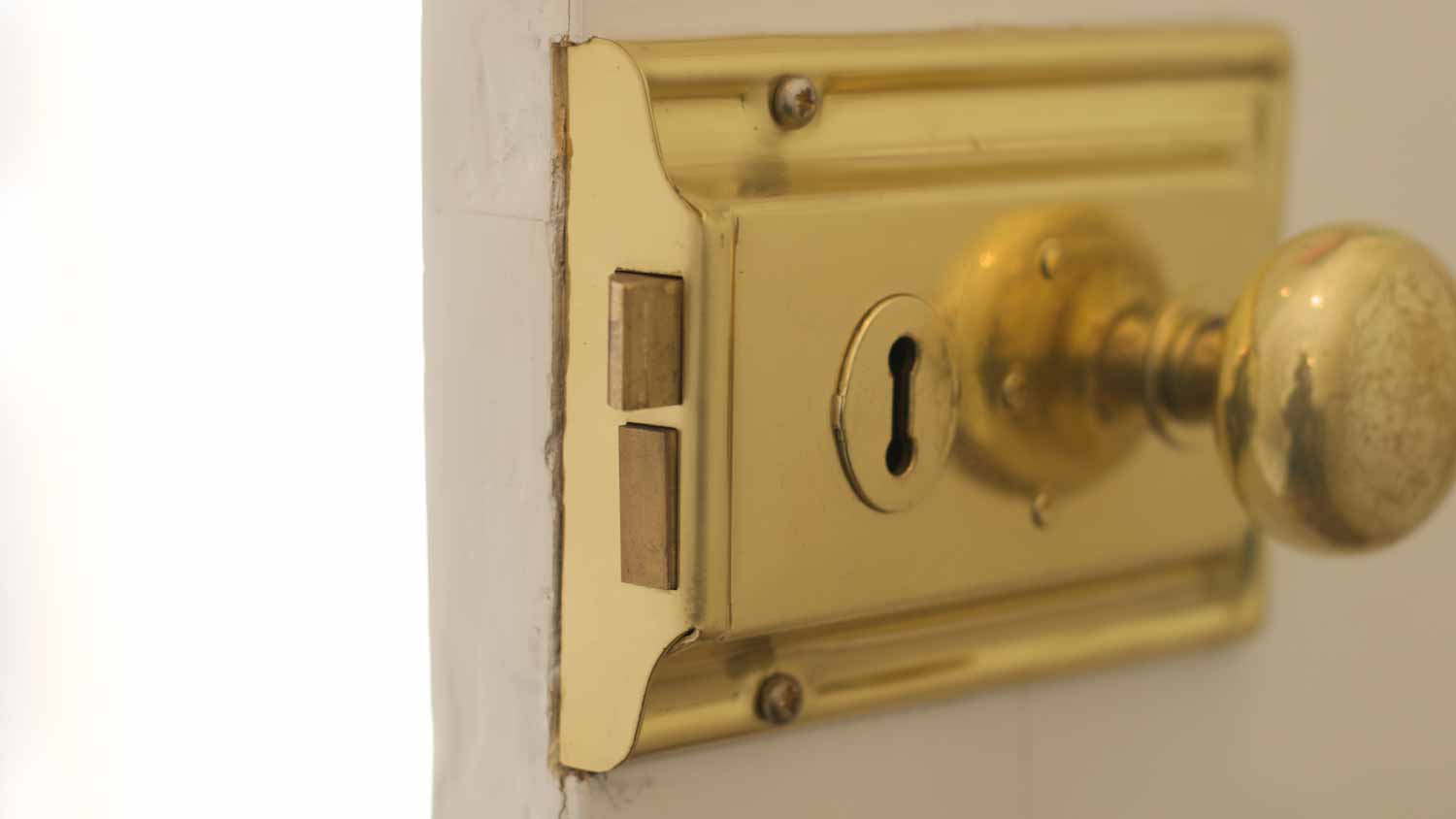
If you want your door to lock automatically behind you as you leave the house, the rim deadbolt lock is right for you. The rim deadbolt is mounted onto a door with its corresponding latch on the door’s frame. That way, the deadbolt will automatically latch in and lock the door when the lock is engaged. It’s impossible to open it without a key from the outside.
One big advantage of the rim deadbolt lock is that it can easily be installed with only a few basic tools. But it’s important to note that it’s not as strong as a traditional deadbolt because it’s mounted to the door frame, not within the door itself.
| Pros | Cons |
|---|---|
| Automatic locking | Not the most secure |
| Easy to install | Easy to remove |
| Decorative options | Requires additional lock |
Best for: Aesthetic appeal in conjunction with additional deadbolt
7. Vertical Deadbolt
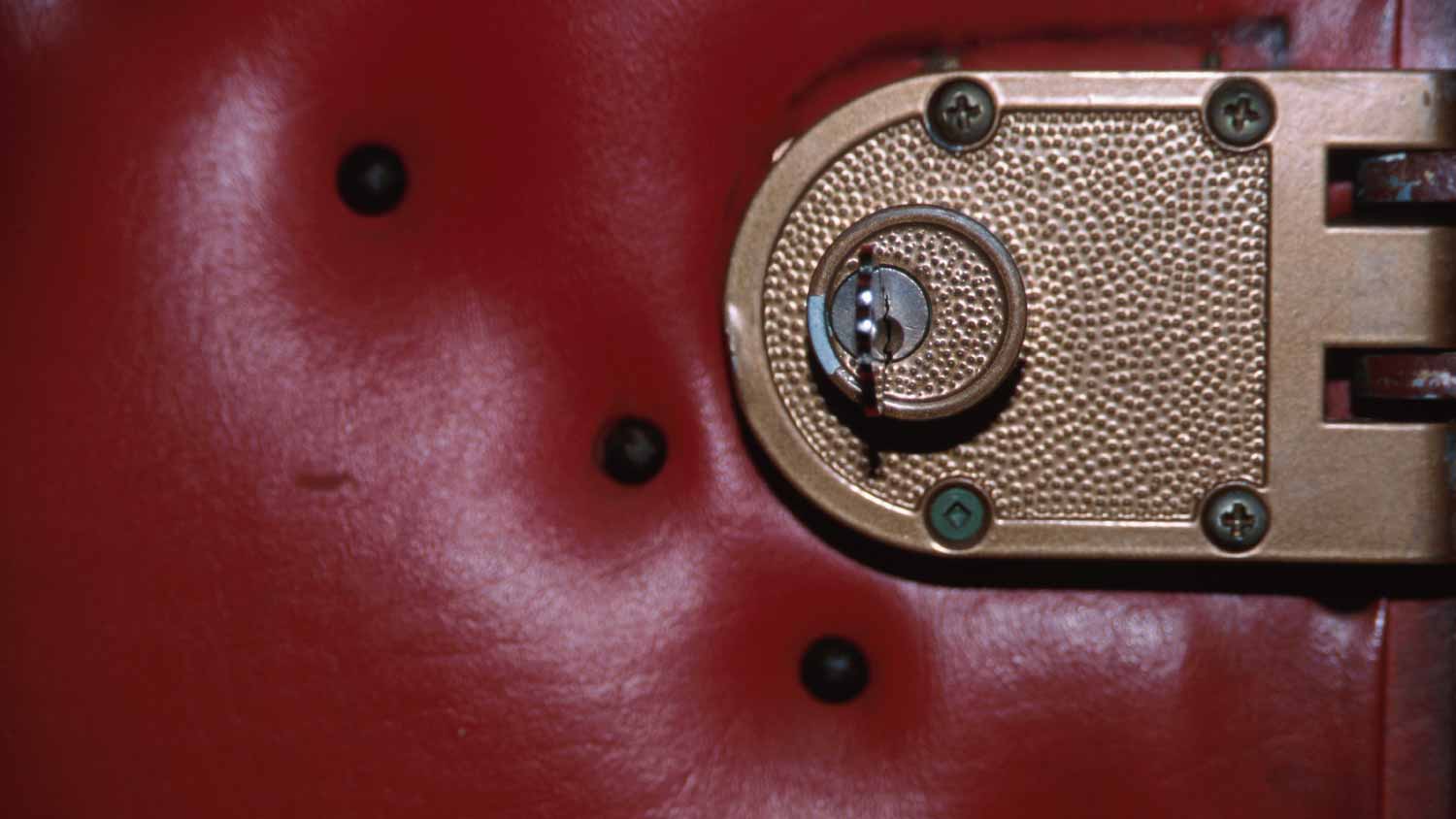
Like a rim deadbolt lock, a vertical deadbolt is installed on both the door and its frame, and the bolt catches into the latch automatically when locked. The difference is that a vertical deadbolt is installed at the top of a door instead of on the side—it’s also known as a “Jimmy-proof” deadbolt. Vertical deadbolts are often used as an extra layer of security to a single-cylinder deadbolt lock, especially on double or French doors. Because of its unique placement, it’s extremely difficult to get through an entrance with a vertical deadbolt lock.
| Pros | Cons |
|---|---|
| Highly secure | Requires secondary deadbolt |
| Reliable | Difficult to install |
Best for: Extra layer of security
8. Lockable Thumb Turn Deadbolt
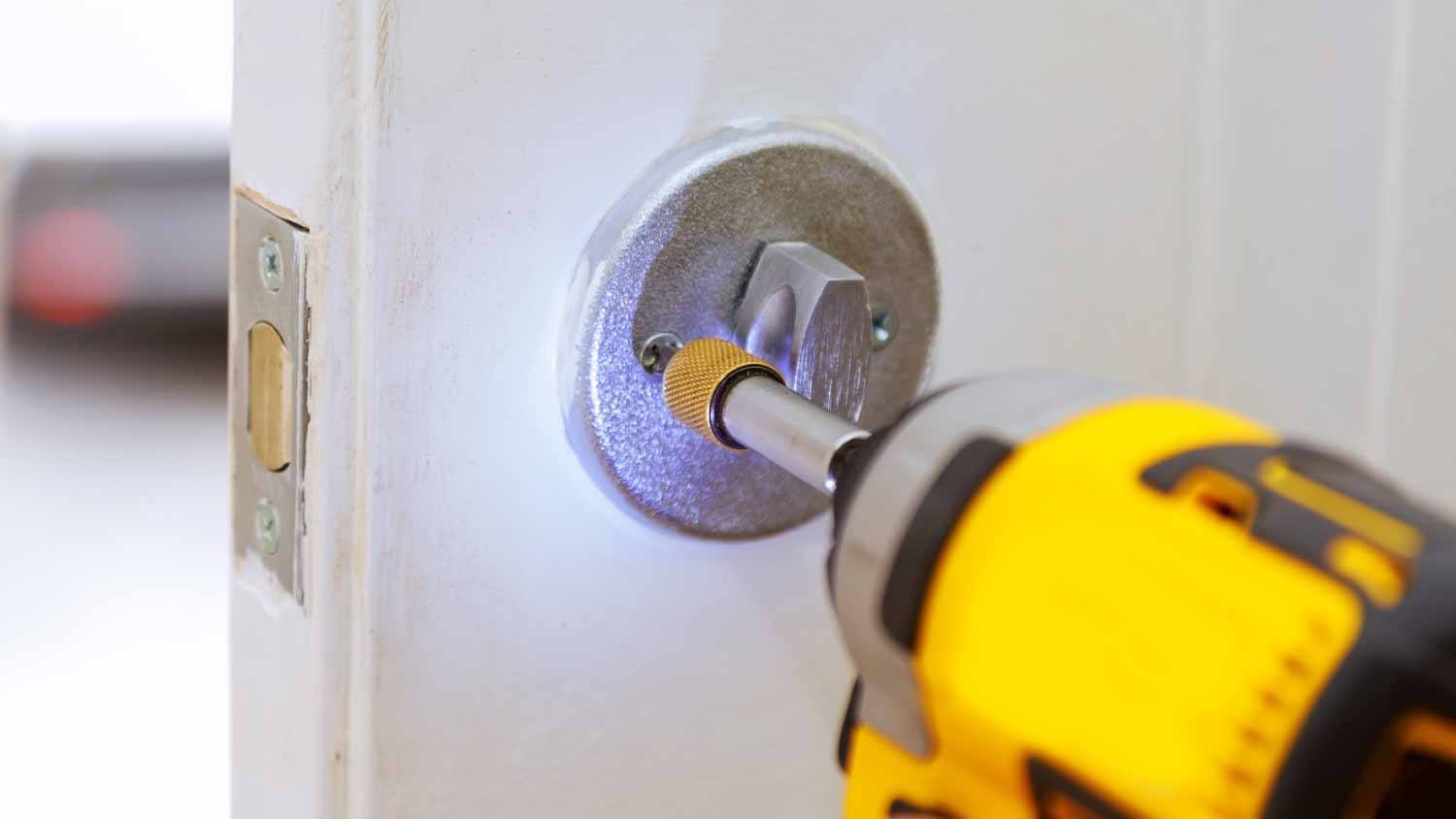
A lockable thumb-turn deadbolt includes a keyed lock on one side and a thumb-turn lock on the other. Typically, you would install the key lock on the exterior of a room and the thumb lock on the interior so that you can easily lock it while in the room. For this reason, they’re often used for rooms inside your home where you may want extra privacy, like a bedroom or bathroom.
Sometimes, the key lock is truly a key opening; other times, it’s simply a small hole where you can use a paperclip or needle to release the lock. However, because of the emergency release system, this type of lock isn’t recommended for an exterior entry door.
| Pros | Cons |
|---|---|
| Good for privacy | Not very secure |
| Easy to install | Not for exterior doors |
| Simple design |
Best for: Interior rooms where privacy is needed
What to Consider When Choosing a Deadbolt Lock
When choosing a deadbolt lock, you can ask yourself some important questions to help narrow down your options and pick the right one for your entrance. The three most important aspects to consider are who uses the door, how often, and how vulnerable the entrance is to a break-in.
A traditional single- or double-cylinder deadbolt lock will likely work well on a front door with multiple people going in and out all day. But if you’d prefer to have more control over who can access the door and when a smart deadbolt lock may be the best choice. Mortise, rim, and vertical deadbolts are all good options for their specific scenarios, whether that’s the added security of a second lock or a secure lock that will see a lot of repeated use.
DIY vs. Hiring a Pro
If you’re working with a single- or double-cylinder deadbolt, a rim deadbolt, or a vertical deadbolt, there’s a good chance you can install your new deadbolt lock yourself. The biggest advantage to this is that you’ll get to skip the cost of a locksmith, but keep in mind there will be time and energy spent on the project.
If you decide to choose something more complex, like a smart deadbolt or mortise lock, it may be best to leave it to the pros and hire a local locksmith in your area. It’s a quick job and shouldn’t take long, so the average cost to hire a locksmith is $150.
Frequently Asked Questions
Various types of deadbolts are available, from the classic single-cylinder lock to a double-cylinder, rim deadbolt, smart deadbolt, and electronic deadbolt lock. Most homes in the U.S. use a single-cylinder deadbolt lock, which requires a key on the exterior and only a thumb turn on the interior to open or close the lock.
The best type of deadbolt depends on your specific needs. If accessibility is your primary concern, a single-cylinder deadbolt is the easiest to operate. Mortise locks are likely the most secure type of deadbolt you can install, but single-cylinders combined with secondary locking mechanisms like vertical locks are also a great option. Smart locks will give you the most flexibility to open and close your locks whenever and wherever you need to.



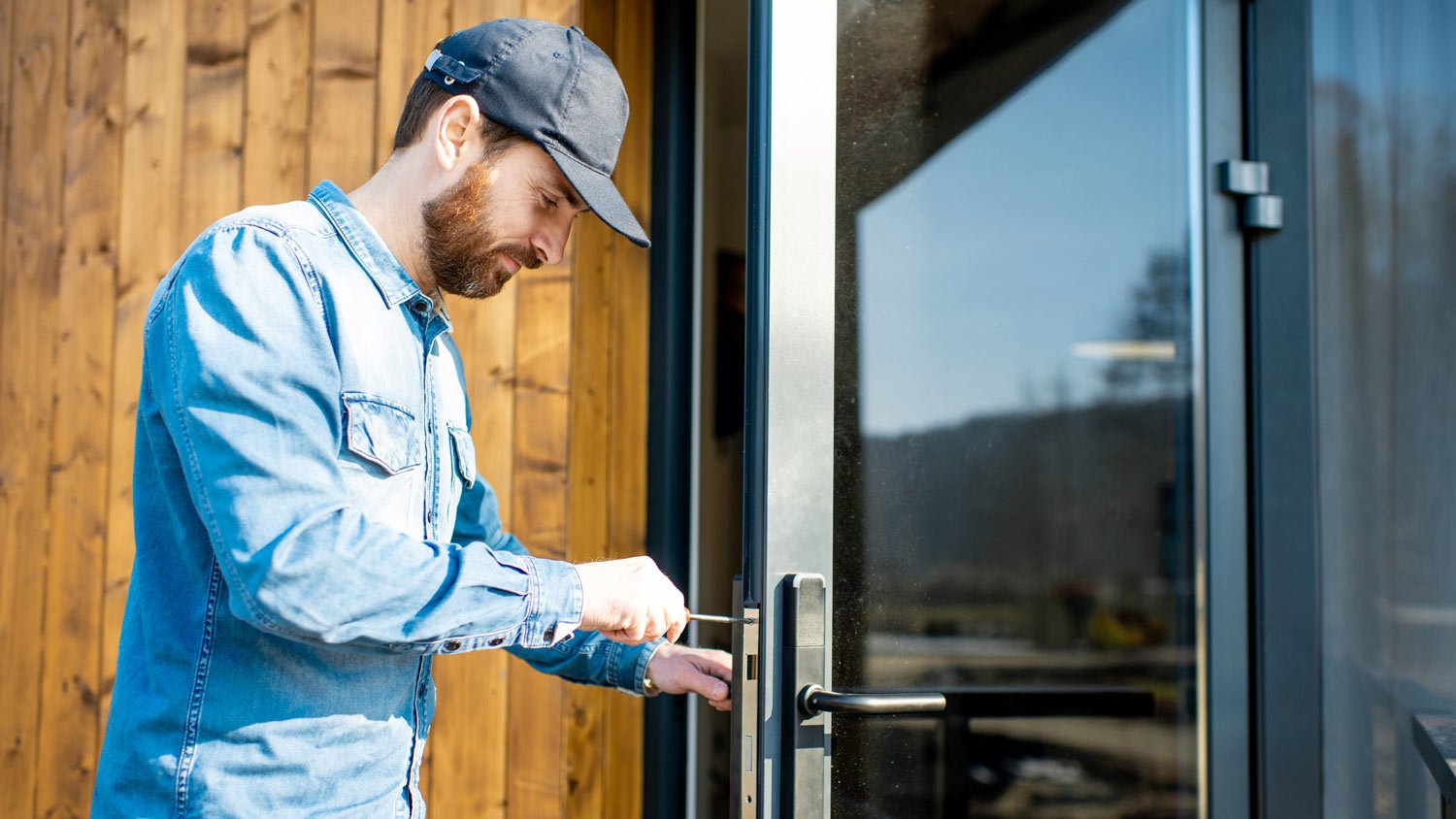

- What’s the Difference Between Single- vs. Double-Cylinder Deadbolt Locks?
- How to Secure a Door Without a Lock While You Wait for a Locksmith
- How to Rekey a Lock in 11 Steps
- How to Get a Broken Key Out of a Lock (With Tools You Already Have)
- Why Water is Leaking Through Your Sliding Glass Door and How to Stop It
- How to Fix a Door That Sticks: 5 Different Methods
- 5 Ways To Make Your Front Door Energy Efficient
- 9 Tips to Make Installing a Pocket Door in Your Home Easy
- Exploring the Different Parts of a Storm Door and Their Functions
- How to Insulate a Door











